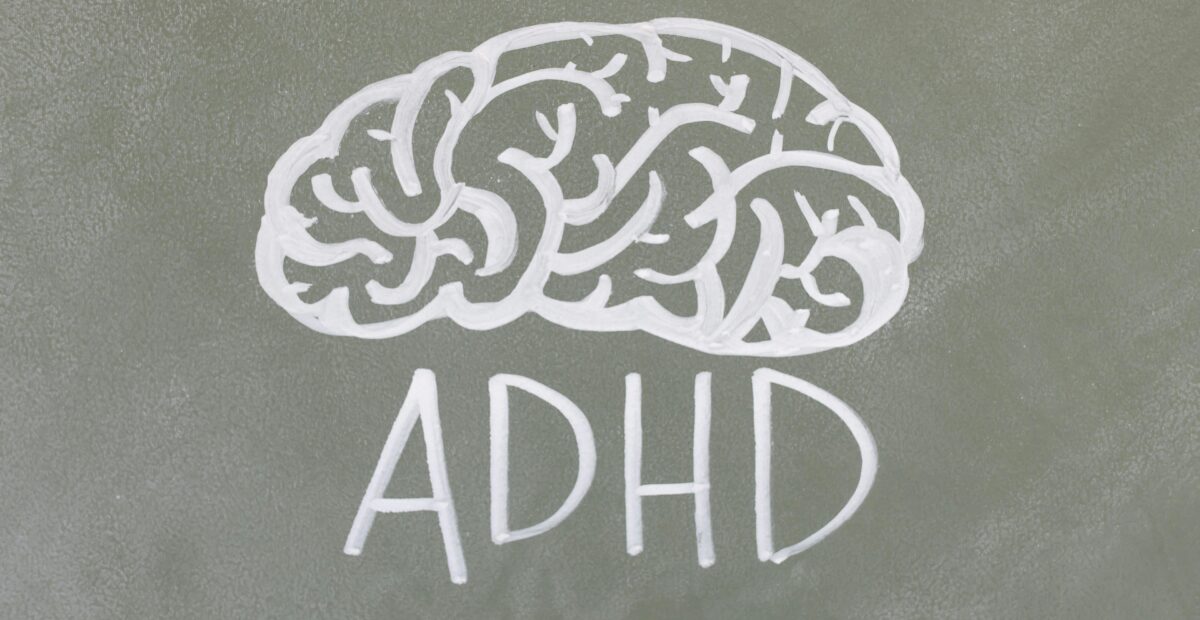Do I Have ADHD? A Look at the Lesser Known Symptoms

Featured Photo by Tara Winstead via Pexels
Many adults start asking this question not because they’re bouncing off the walls, but because something just doesn’t feel right.
They’re:
- Feeling intense emotional responses to everyday situations
- Forgetting small tasks but remembering complex details
- Struggling to sleep despite exhaustion
- Overthinking every decision
If that sounds familiar, you’re not alone. This article is designed for people who are exploring whether their symptoms could be ADHD. We’ll cover some common signs that might’ve led you here, and then take a deeper dive into the lesser-known symptoms that are rarely discussed but just as real.
We’ll also gently explore what it looks like to seek diagnosis—and if it feels aligned, we’ll link you to an ADHD test and information on getting evaluated.
Disclaimer: This article is for informational purposes only and does not substitute for medical advice or a professional diagnosis. If you suspect ADHD, consult with a licensed healthcare provider.
ADHD: A Neurodevelopmental Difference
ADHD isn’t just about forgetfulness or fidgeting.
It’s a brain-based difference that affects:
- Time management
- Impulse control
- Emotional regulation
- Working memory
According to the World Federation of ADHD, roughly 2.6% of adults worldwide meet the criteria for persistent ADHD (Faraone et al., 2021).
I used to wonder how I could work 12 hours straight on a creative task… yet forget to take the bins out. Once I understood interest-based nervous system activation, everything clicked.
My Story & Core ADHD Expressions

1. Hyperfocus
I’d enter a flow state for hours – skipping meals, ignoring messages, fully immersed.
One time, I worked 16 hours straight on a presentation. I felt euphoric… until I forgot a call the next day and spiralled into shame.
Hyperfocus is a paradoxical ADHD trait – intense focus on highly engaging tasks. While not in official criteria, it’s backed by research (Hupfeld et al., 2019).
Reframe: Hyperfocus is not a flaw—it’s a form of deep engagement that can be powerful with the right scaffolding.
2. Time-Fluidity (Time Blindness)
I’d say, “just 10 more minutes,” only to look up hours later.
Time felt… elastic. Not disorganised – just neurologically different.
Research shows ADHD affects:
- Time estimation
- Transitioning between tasks
- Awareness of time passing (Barkley, 2010)
Case study: One of my coaching clients constantly underquoted timelines. With visual blocks and timers, she started delivering projects on time—not from working harder, but by finally “seeing” time.
Reframe: Difficulty with time isn’t carelessness—it’s a brain-based difference in time perception.
3. Rejection Sensitivity

Photo by cottonbro studio via Pexels
One comment. One unread message. That’s all it took.
I’d spiral, replay it for hours. Turns out, it wasn’t overreaction—it was Rejection Sensitivity.
Often referred to as Rejection Sensitive Dysphoria (RSD), this intense emotional pain is common in ADHD, even though it’s not yet formally recognised in diagnostic manuals (Dodson, 2017).
Personal reflection: I once ended a collaboration because an email felt passive-aggressive. Later, I learned the sender was just tired. I wrote a five-week journal on how to overcome rejection sensitivity. Here’s the short version: become a master at restructuring, regulation, and resilience and turn from chaos to calm.
Reframe: You’re not “too sensitive.” Your brain processes perceived rejection more intensely.
4. Intrusive Thoughts & Sleeplessness
This one was harder to admit.
I’d lie awake, replaying past mistakes or worrying about things that hadn’t happened. My brain wouldn’t “turn off.”
ADHD is strongly linked to:
- Sleep disorders like delayed sleep phase syndrome
- Racing or looping thoughts at night
- Overthinking as a form of executive function overload
Studies suggest that up to 75% of adults with ADHD experience some type of sleep disruption (Yoon et al., 2013), though prevalence varies depending on population and criteria used.
Reframe: Nighttime restlessness isn’t just anxiety—it could be part of the ADHD experience.
5. Perfectionism & Paralysis
I’d toggle between:
- Rewriting emails five times
- Avoiding tasks completely
This wasn’t pickiness. It was a trauma-informed response to internalised shame and years of overcompensating.
Perfectionism in ADHD is linked to:
- Fear of criticism
- Emotional dysregulation (Toner et al., 2006)
Reframe: You’re not failing. You’re trying to avoid being shamed for things your brain struggles to manage.
6. Executive Function Challenges
Planning. Initiating. Completing.
These basic steps felt monumental. Even when I wanted to act, I couldn’t begin.
Executive dysfunction is a hallmark of ADHD (Barkley, 2012).
Case study: A business owner couldn’t launch her email funnel. We broke the tasks into visual checklists and delegated tech triggers—she launched within a week.
Reframe: Hitting a wall doesn’t mean you’re unmotivated—it means your executive functions need support.
7. Gender & Cultural Differences

Featured Photo by Chinmay Singh via Pexels
Growing up, I thought I was “too emotional,” “too chatty,” or just forgetful.
But I was masking.
Research shows:
- Girls tend to internalise ADHD traits
- Boys are more likely to be referred for externalised behaviours (Hinshaw & Ellison, 2016)
This contributes to many girls and women being overlooked or misdiagnosed with anxiety or depression.
Reframe: If no one saw it, it’s not because it wasn’t there—it’s because they weren’t looking through the right lens.
8. Co-Occurring Conditions
When I was assessed, I was also navigating OCD, depression, suspected autism, dyscalculia and was already diagnosed with dyspraxia and dyslexia years before.
That’s not unusual.
Research suggests up to 80% of adults with ADHD have at least one co-occurring condition (Kessler et al., 2006):
- Anxiety
- Depression
- Autism spectrum traits
- Learning differences (dyslexia, dyspraxia, dysgraphia)
Reframe: You’re not broken. You’re complex—and worthy of comprehensive support.
9. What Helped Me (and Might Help You)

Photo by Andrea Piacquadio via Pexels
Here’s what supported my growth:
- ADHD-informed coaching to help me build sustainable systems
- Reflective journaling to notice patterns and build self-trust
- A community that validated my experience
- Environmental adjustments like changing my workspace and sensory inputs
If you’re curious about your own traits:
- Take our ADHD Quiz
- Learn more about getting a diagnosis
- Connect with professionals who view ADHD as a neurological difference, not a deficit (hint: Exceptional Individuals)
Reframe: You don’t need more willpower. You need a plan that works with your brain.
Final Thought: You’re Not Broken. You’re Brilliantly Wired.
ADHD doesn’t show up in just one way.
Sometimes it’s loud. Sometimes it’s quiet. Sometimes it looks like overachievement. Other times, it’s chronic burnout.
If this resonated, your next steps could include:
- Taking a validated ADHD self-assessment
- Following neurodivergent educators
- Finding systems that honour your pace and processing style
You’re not too much.
You are just right. You deserve support that sees—and celebrates—your unique wiring.
References
- Barkley, R. A. (2010). Deficient emotional self-regulation: A core component of ADHD.
- Faraone, S. V., et al. (2021). The World Federation of ADHD International Consensus Statement: 208 Evidence-based conclusions about the disorder.
- Hinshaw, S. P., & Ellison, K. (2016). ADHD: What Everyone Needs to Know.
- Hupfeld, K. E., Abagis, T. R., & Shah, P. (2019). Living ‘in the zone’: hyperfocus in adult ADHD.
- Kessler, R. C., et al. (2006). The prevalence and correlates of adult ADHD in the United States.
- Toner, M., O’Donoghue, T., & Houghton, S. (2006). Living in chaos and striving for control: How adults with ADHD deal with their disorder.
- Yoon, S. Y. R., Jain, U., & Shapiro, C. (2013). Sleep in attention-deficit/hyperactivity disorder in children and adults: Past, present, and future
Need support now?
Explore our Neurodiversity Coaching
Get on the waitlist for our neuro community The EDGE membership
Join one of our next Neurodiversity Webinars




